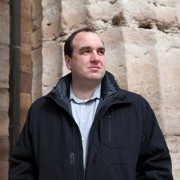Policy
Putting federal aid into local hands works, White House says
State budget surpluses are a sign the American Rescue Plan worked, Biden adviser Gene Sperling told the National Association of Counties conference.

From left, Mitch Landrieu, White House infrastructure coordinator, John Podesta, senior advisor to the President for Clean Energy Innovation and Implementation, and Gene Sperling, White House American Rescue Plan Coordinator, participate in a discussion during The National Association of Counties (NACo) 2023 Legislative Conference at the Washington Hilton on Monday, Feb. 13, 2023. Tom Williams/CQ-Roll Call, Inc via Getty Images
A top adviser to President Joe Biden touted the $350 billion in direct aid to state and local governments in the American Rescue Plan as “the best model for a recovery plan ever,” a tacit rebuke to congressional Republicans and other critics who have questioned why the coronavirus aid package was so large.
“I get phone calls from the media all the time, and they say if California and Florida have such big surpluses, I guess they didn’t need this,” said Gene Sperling, who oversees the White House’s roll out of the 2021 law. “The reason they have such surpluses is not just the size of the American Rescue Plan [but because] the program worked.”
“It grew the economy. It surged their revenues and your revenues,” Sperling told officials gathered this week in Washington, D.C. for a National Association of Counties conference. “If you’re using an umbrella and not getting wet, that’s not a reason to not use the umbrella.”
Sperling was one of several Biden administration officials to speak at the NACo conference, in an effort to get the local jurisdictions on board with many of the White House’s top priorities and to help attendees navigate the dozens of new federal grant programs that have been created since Biden took office.
The rescue plan was one of Biden’s first congressional victories as president, it remains one of the most scrutinized.
Many local leaders worry that Republicans who recently won a narrow majority in the U.S. House will try to take back unspent money that was designated for state and local governments in that law. Many GOP lawmakers have pressed for federal spending cuts as a prerequisite for raising the country’s debt ceiling.
But Sperling, who previously worked as an economic adviser to Presidents Clinton and Obama, said sending money directly to state and local governments helped avoid the painfully long recovery that occurred after the Great Recession.
“We saw then what it meant when there weren’t enough resources for you,” he told the county officials. “We saw the contraction. We saw state and local governments actually detract from growth.”
Then, when the aftershocks of the recession hurt small businesses and left cities with commercial areas full of foreclosed properties, public officials didn’t have the capacity to respond, Sperling said.
“People were impotent to do anything, because we hadn’t had resources going directly to you for long enough to not just get back but to deal with the challenges,” he said.
After the turmoil caused by COVID-19, the economy faced unpredictable challenges, including China’s lockdowns, the Russian invasion of Ukraine and supply chain disruptions.
But this time, he said, the U.S. economy has remained strong. The difference, he asserted, was in how well-positioned local governments were to respond.
“At this point, usually states, counties are contracting, cutting, laying off. Instead [this time], you’re actually becoming part of the resilience in the economy,” Sperling said.
With money going directly to local governments, county officials could immediately start making plans for improvements they would make in the next three to five years, he added.
Mitch Landrieu, Biden’s chief infrastructure adviser, also touted the benefits of giving money directly to local governments. When it comes to infrastructure spending, he said, Congress traditionally sent money to state governments to decide how to divvy up the money. But in the 2021 infrastructure law, Biden insisted on making more of that funding directly available to local governments, said Landrieu, the former mayor of New Orleans.
Transportation Secretary Pete Buttigieg said the infrastructure grants that local governments can apply for are a “safety valve” to help local officials if the states are not responsive.
Plus, he said, the discretionary grants “where we do really identify projects in communities that we want to shine a light on are a way to send a signal about what we hope, policy wise, the states consider doing with their formula dollars.”
“It’s their call. As long as it’s legal, they can do whatever they see fit. But we hope that we can provide a proof of concept on great ideas … and then the states will notice,” Buttigieg said, “especially when you’ve got decisions that are going to have a huge impact on safety, on job creation, on equity, on climate.”
The transportation secretary acknowledged that applying for federal grants can be difficult for small governments, and county executives in particular, who have “as much responsibility as a mayor and like a tenth of the staff and attention.”
He said the federal Transportation Department would work with local officials to provide technical assistance.
“I know as soon as anyone hears the words ‘technical assistance’ that sounds like a bloodless thing or when somebody doesn’t get the grant it can be a consolation prize,” he said to laughter. But the extra help can come in handy for local officials to find the right grants to apply for and to speed along construction once they get those grants, Buttigieg said.
Daniel C. Vock is a Washington, D.C.-based senior reporter for Route Fifty, where this story was first published.
NEXT STORY: Parkland shooting 'feels like five minutes ago' for survivors, parents
